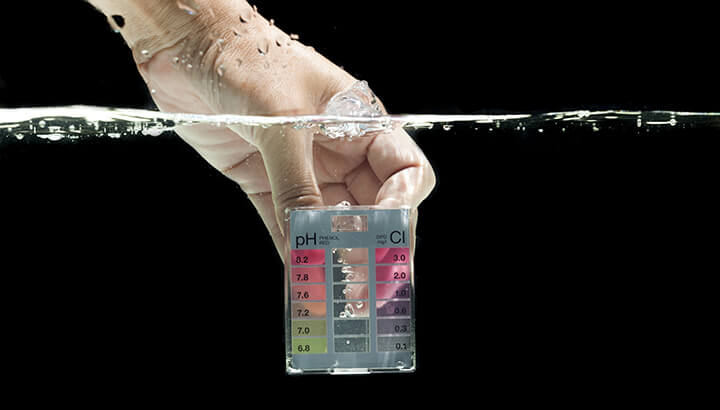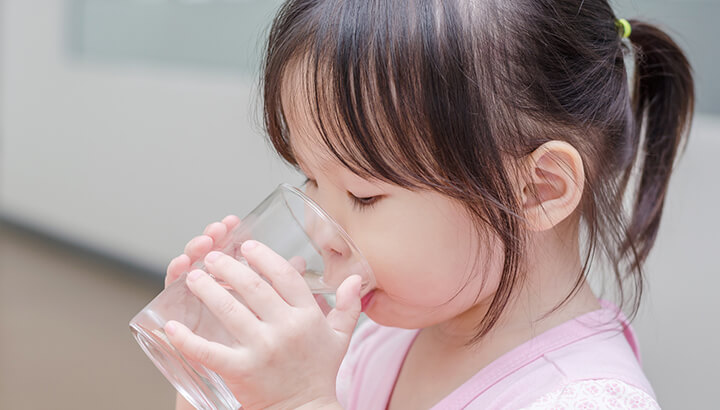
When we imagine taking a shower, most of us probably picture an experience of relaxation: the hot steam opening our pores, washing away the grime of the day, allowing us to step out refreshed. Of course, some showers are quick and militant. These may not be as fun, but can still be refreshing.
When it comes to a shower, what in the world could there be to fear? No, I’m not talking about serial killers lurking outside the shower curtain (though thanks to Alfred Hitchcock, many people have this phobia). I’m talking about a chemical compound that’s added to many municipal water supplies, which may be endangering your health: chlorine.
Most people associate chlorine with swimming pools, and it’s a fair association — those places stink of the stuff. However, chlorine is also found in the tap water in many regions across the United States. Even if you filter your tap water before drinking it, chlorine (and its byproducts) can enter your body through your skin when you shower. Additionally, when the water temperature is hot, chlorine creates chloroform gas, which you then inhale.
Your skin is the largest organ of your body, and it is highly porous and absorbent. It may be possible to take in more chlorinated water through your skin during a hot bath or shower than through drinking it. So, if your home water system is treated with chlorine, and you take baths or showers without some sort of filtration system specifically designed to weed out the chlorine, you’re chronically exposed.
It’s not just chlorine itself that you have to worry about, either. Though chlorine alone has its own dangers (more on that in a bit), it also combines with organic compounds, such as the sweat and oil on our skin, to produce trihalomethane byproducts, commonly referred to as THMs. The levels of THMs produced when you take a hot bath or shower are rather low, however, over time, these carcinogens could have increasingly detrimental effects.
The research
There is a significant body of research linking chlorine and its byproducts, including THMs, to adverse health effects. The following are just a few studies which have examined this topic.
Cancer risk
The authors of a 2009 study published in the journal Science of the Total Environment wrote:
“Exposure to trihalomethanes (THMs) through inhalation and dermal contact during showering and bathing may pose risks to human health. During showering and bathing, warm water (95 to 113 degrees Fahrenheit) is generally used. Warming of chlorinated supply water may increase THMs formation through enhanced reactions between organics and residual chlorine. Exposure assessment using THMs concentrations in cold water may under-predict the possible risks to human health.”

For their study, researchers developed a “formation rate model” for THMs, and used it to test THM concentrations in warm water across three cities in Ontario, Canada: Toronto, Ottawa and Hamilton. They then compared cancer risks in these cities to THM concentrations. On their results, the study authors wrote:
“This study predicted 36 cancer incidents from exposure to THMs during showering for these three cities, while Toronto contributed the highest number of possible cancer incidents (22), followed by Ottawa (10) and Hamilton (4). The sensitivity analyses showed that health risks could be controlled by varying shower stall volume and/or shower duration following the power law relationship.”
Even if the exposure to these chlorine byproducts could be lessened by taking cooler showers, and shorter showers, the fact that a cancer risk is present at all is significantly worrying.
Respiratory, skin and eye irritation
Two very well-known health risks of chlorine exposure are respiratory trouble and irritation of the skin and eyes. You may feel your eyes burning after swimming in a swimming pool, or after taking a shower if your water is significantly chlorinated. People who have asthma or allergies may notice their symptoms worsening. Sometimes these effects are mild, but in some individuals, they may be serious.
During a 2007 study published in the European Respiratory Journal, researchers tested the association between swimming pool employees in the Netherlands and instances of respiratory complications. For the study, questionnaires were provided to 624 swimming pool employees across 38 facilities. The researchers also took samples of chlorine levels in these facilities.
On their results, the study authors wrote:
“Employees with higher exposure reported upper respiratory symptoms with greater frequency. Upper respiratory symptoms were statistically significantly associated with cumulative chloramine levels… general respiratory symptoms were significantly elevated compared with a Dutch population sample.”
These upper respiratory symptoms included sinusitis, throat hoarseness and a lost voice. The study authors also observed:
“An excess risk for respiratory symptoms indicative of asthma was observed in swimming pool employees. Aggravation of existing respiratory disease or interactions between irritants and allergen exposures are the most likely explanations for the observed associations.”
Although these associations were found in swimming pool employees who were around high concentrations of chlorine on a daily basis, it is not far-fetched to speculate that they may occur in people who are continuously exposed to chlorinated tap water in their showers and baths. This may be especially dangerous to people who have preexisting respiratory allergies or asthma.
Cardiovascular defects in infants
Some research has associated chlorine with heart defects in infants. In a 2002 study published in the journal Environmental Research, researchers explained:
“Drinking water disinfection byproducts have been associated with an increased risk for congenital defects including cardiac defects. Using Swedish health registers linked to information on municipal drinking water composition, individual data on drinking water characteristics were obtained for 58,669 women. Among the infants born, 753 had a cardiac defect. The risk for a cardiac defect was determined for groundwater versus surface water, for different chlorination procedures, and for trihalomethane and nitrate concentrations.”
On the results of their study, researchers noted that “chlorine dioxide appears itself as an independent risk factor for cardiac defects.” Summarizing their study, the researchers added:
“The individual risk for congenital cardiac defect caused by chlorine dioxide and trihalomethanes is small but as a large population is exposed to public drinking water, the attributable risk for cardiac defects may not be negligible.”
While this study examined drinking chlorinated water, and not bathing in it, many people (especially children) swallow at least a bit of water every time they bathe.
… and more
A study published in the year 2000 in the Journal of Orthomolecular Medicine linked chlorine exposure in tap water to a variety of ill health effects. These included worsening dandruff, weakened immune system, destruction of beneficial gut bacteria, potential artery damage, carcinogenic byproducts and an increased chance of miscarriage.
Furthermore, exposure to chlorine may lead to hormonal disruption, digestive disturbances including bloating and indigestion, and eye infections such as conjunctivitis (a.k.a. pinkeye).
Yikes. From this research, chlorine exposure from showering certainly appears to be a very real threat.
What you can do

First of all, you’ll want to find out if your home tap water is indeed chlorinated. This can be accomplished by making a quick call to your city, town or county water treatment plant. This information may also be available online, but calling may be beneficial, as some websites may not be updated frequently. If you look online, make sure dates are current.
If your area does use chlorinated water, there are several steps you can take. You definitely don’t want to be drinking this stuff; installing a dechlorinating water filter on your taps is a great first step. Make sure to read reviews and compare units. Also, it’s key to find out how often these filters need to be replaced, and how they need to be maintained.
For your shower, you can install a dechlorinating shower filter. There are many on the market, so it’s worth it to compare and check reviews on these, as well. For baths, there are bath dechlorinators available, such as bath ball dechlorinators, which hang underneath your faucet and remove the chlorine when the water enters the filter. Remember, not all filters remove chlorine from water, so you want to make sure that the filter you choose is effective for this purpose.
It may seem like a sizeable investment, but the best way to ensure that all of the water in your home is chlorine-free is to install a whole house dechlorination system (WHDS). These water systems are typically installed in your garage and use carbon to remove chlorine from all of the water in your home. Once this system is in place, you’ll know that all of the water coming out of your taps, shower and bath spouts is chlorine free. Even the water coming out of your garden hose spigots will no longer contain chlorine — great for the plants. While there are many WHDS systems available, ones which use coconut shell-based carbon are sometimes recommended because they do not degrade as easily as other carbon sources.
If you do your research, you’ll find the best dechlorination solution for you and your family. Then, there won’t be any more reason to fear the shower — though I understand if you still need to check the bathroom for serial killers now and then!
— Tanya Rakhmilevich

